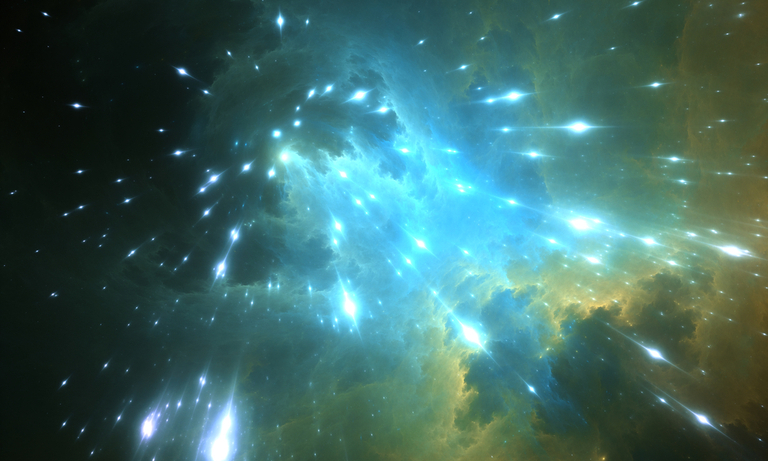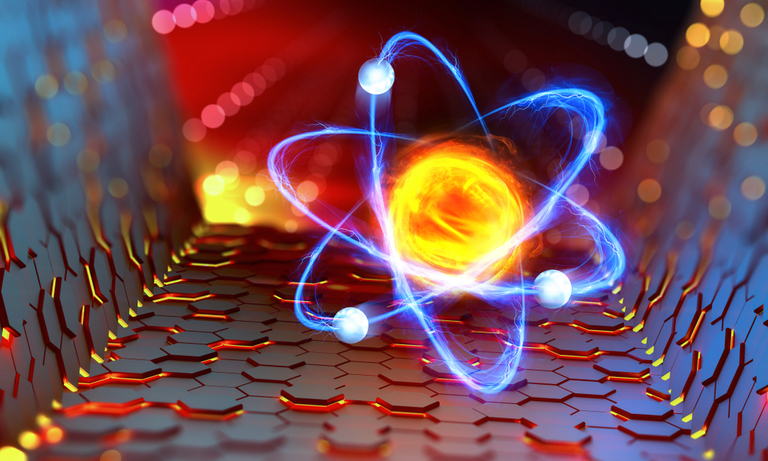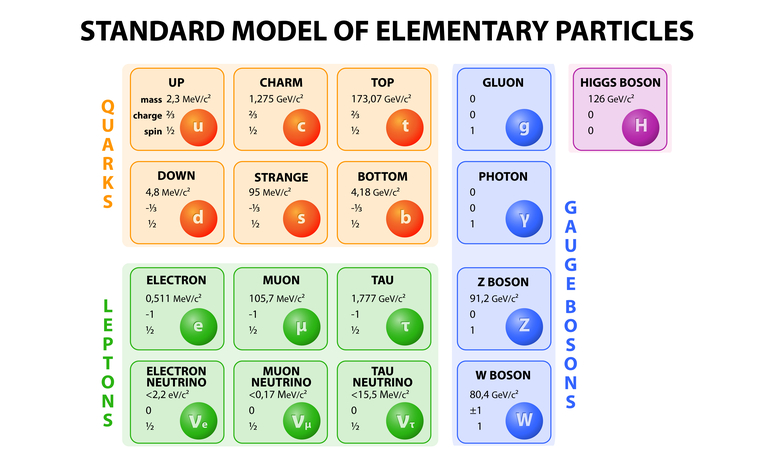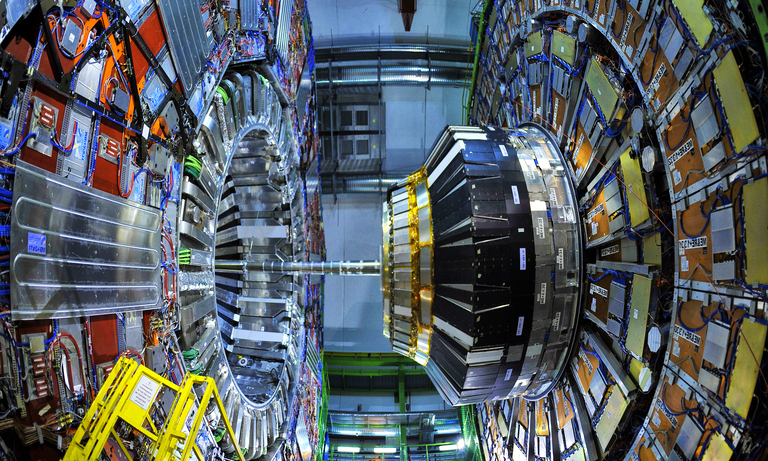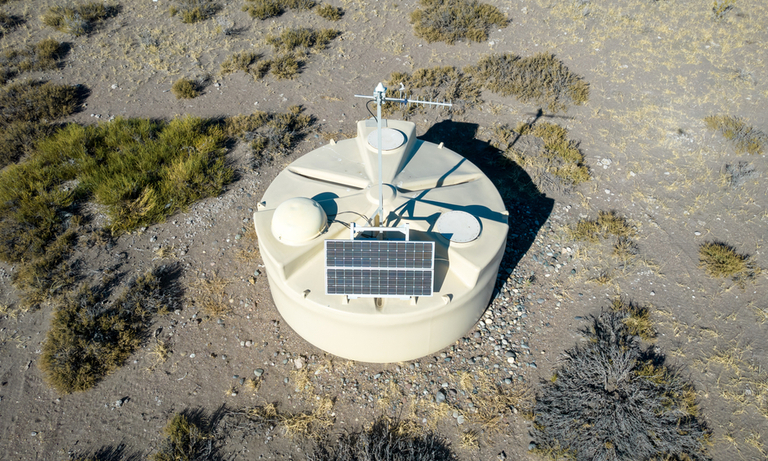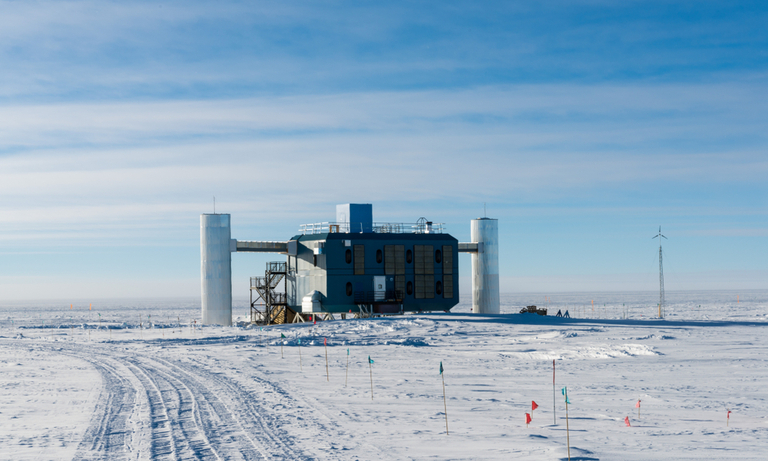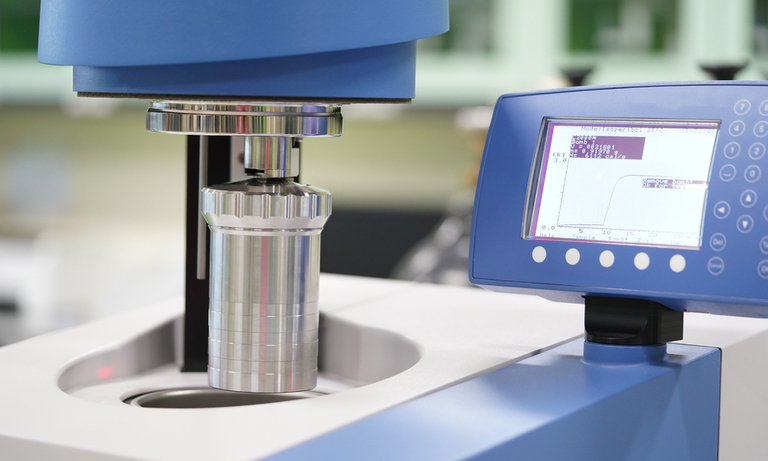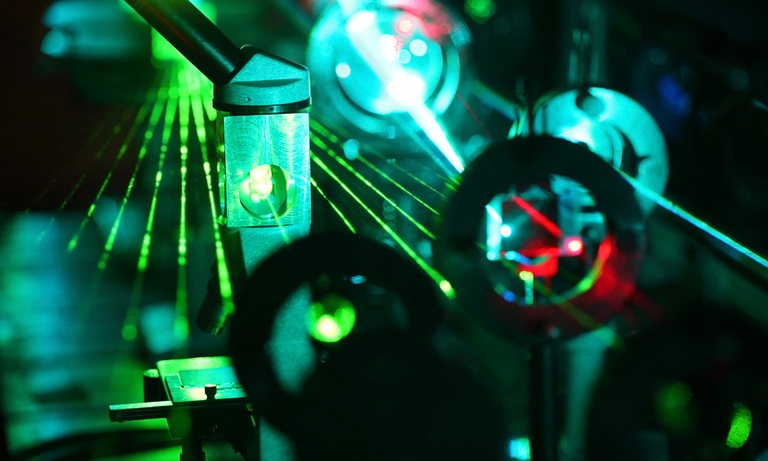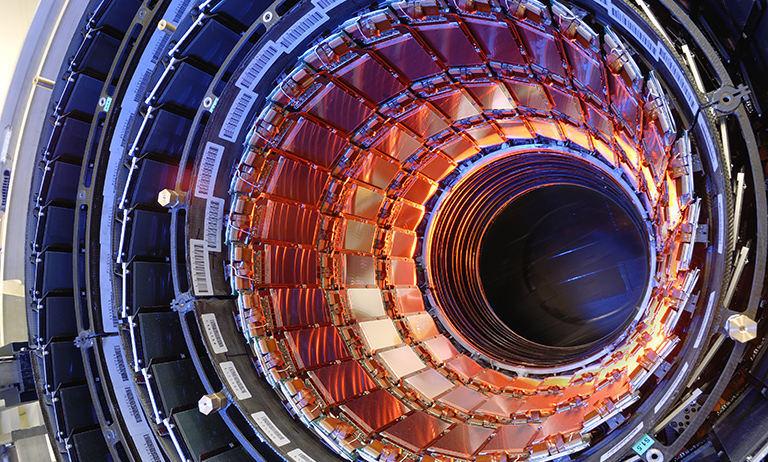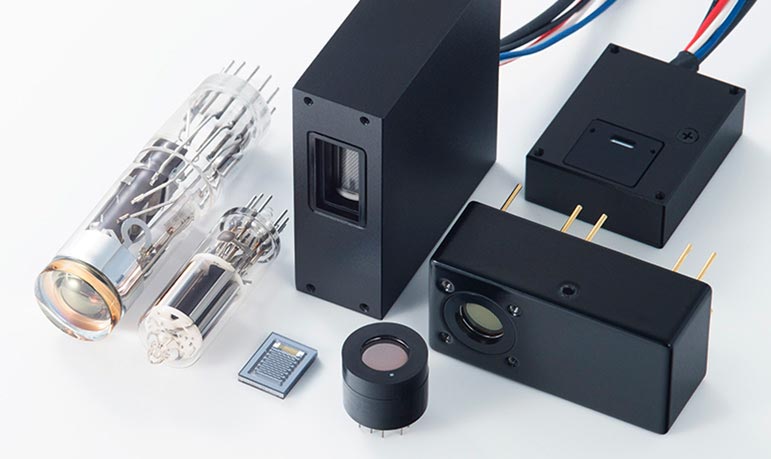Home
Products
Physics Research Field
Type of Experiment
Detector Type
Behind the Science
Tech in a Nutshell
United Kingdom (EN)
Select your region or country.


High Energy Physics
High energy physics (also known as particle physics) is a branch of physics that studies the nature of the elementary constituents of matter and radiation, and the interactions between them. The name “high energy physics” originates from the natural conditions in which elementary particles are created; indeed they can be created and detected during energetic collisions of other particles, as performed in particle accelerators.
Since the 1970s, particle physicists have described the fundamental structure of matter using an elegant series of equations called the ‘Standard Model’. The model describes how everything that they observe in the universe is made from a few basic blocks called fundamental particles, governed by four forces (strong, weak, electromagnetic and gravitational).
The Standard Model has many species of elementary particles (fermions, vector and scalar bosons), which can combine to form composite particles, accounting for the hundreds of other species of particles discovered.
Over the years, it has explained many experimental results and precisely predicted a range of phenomena, such that today it is considered a well-tested physics theory. But the model only describes 4% of the known universe and questions remain, such as ‘why is the Higgs mass so light?’, ‘what is dark matter made of?’, ‘are all the forces unified into one force at high energy?’, ‘what happened to the antimatter in the early universe?’.
Today, the high energy physics community is trying to answer to these questions guided by intertwined science drivers:
- Using the Higgs boson as a new tool for discovery
- Pursue the physics associated with neutrino mass
- Identify the new physics of dark matter
- Understand cosmic acceleration: dark energy and inflation
- Explore the unknown: new particles, interactions and physical principles
The science drivers provide compelling lines of inquiry that show great promise for discovery. The HEP community executes its mission through a program that advances three frontiers of experimental scientific discovery and related efforts in theory and computing. Moreover, this program is integrated with the development of new accelerators, detectors and computational tools to enable the science.
The mission of the High Energy Physics (HEP) program is to understand how our universe works at its most fundamental level. It enables scientific discovery through a strategy organized along three interrelated frontiers of particle physics.
ENERGY FRONTIER
Energy Frontier researchers accelerate particles to the highest energies ever made by humanity and collides them to produce and study the fundamental constituents of matter and the architecture of the universe. They use the world’s largest and highest energy particle accelerator (Large Hadron Collider, LHC) to recreate the universe as it was a billionth of a second after the big bang and make huge discoveries about the smallest pieces of the universe.
The discovery of the Higgs boson by the ATLAS and CMS experiments at the Large Hadron Collider in July 2012 was the culmination of a global effort that began in 1964 when François Englert, Peter Higgs and other theorists proposed it as the final piece to the Standard Model of particle physics.
Now that the Higgs boson has been discovered, Energy Frontier researchers will use it as a new tool for discovery. The Higgs boson plays a central role in the Standard Model and affects many of its predictions.
By precisely measuring the Higgs boson’s properties, Energy Frontier researchers will be able to establish its exact character and discover if there are indications of new physics beyond the Standard Model.
High energy particle collisions also allow researchers to explore mechanisms of black hole production, search for extra dimensions of space, and pursue other exotic phenomena.
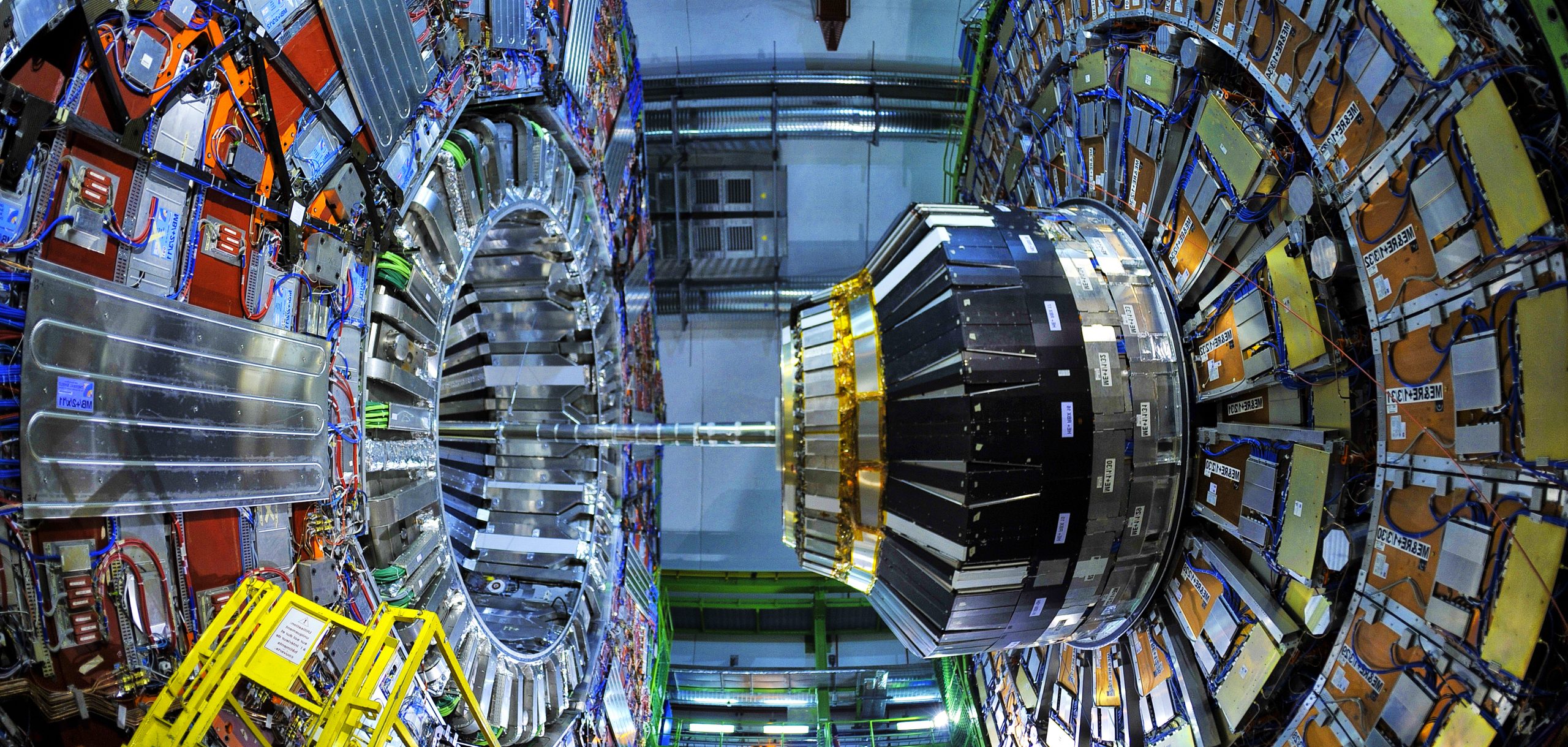
INTENSITY FRONTIER
Intensity Frontier researchers use a combination of intense particle beams and highly sensitive detectors to make extremely precise measurements of particle properties, study some of the rarest particle interactions predicted by the Standard Model of particle physics and search for new physics.
Making precise measurements of known particles allows researchers to determine whether the Standard Model road map is complete (e.g. the experiment Belle II aims to precisely measure physical properties of quarks and leptons, search for the source of matter-antimatter asymmetry in the universe today, and discover new states of matter).
Researchers at the Intensity Frontier investigate some of the rarest processes in nature, including unusual interactions of fundamental particles and subtle effects that require large data sets to observe and measure (i.e. Long-Baseline Neutrino Facility, LBNF, and the Deep Underground Neutrino Experiment, DUNE, for the study of neutrino physics).
Intensity Frontier researchers also explore the unknown in search of new particles and forces by making extremely precise measurements of particle properties and studying some of the rarest particle interactions.
Some particle interactions, predicted to be extremely rare in the Standard Model of particle physics, would be significantly enhanced if new particles or forces exist. In some experiments, finding even a single one of these special interactions may be the first indication of new physics. Other experiments apply the same principle to extremely precise measurements of fundamental particle properties, where measuring a deviation from the Standard Model’s prediction would indicate that new particles exist.
Moreover, there are some models of dark matter that include new “dark” particles and forces which have ultra-weak couplings to normal matter. These models can be explored by using intense particle beams, highly capable, high rate detectors in a way that complements research efforts in the Cosmic and Energy Frontiers.
COSMIC FRONTIER
Cosmic Frontier researchers seek to reveal the nature of dark matter and dark energy by using particles from space to explore new phenomena.
They use diverse tools and technologies, from space-based observatories to ground-based telescopes and large detectors deep underground, to probe fundamental physics questions and offer new insight about the nature of dark matter, dark energy and other phenomena.
They exploit the observation of extra-terrestrial, ultra-high energy gamma rays and cosmic rays to explore for new particles and interactions beyond those in Standard Model.
Indeed, some sites exist in the universe (such as supermassive black holes, supernova remnants, active galactic nuclei, etc.) where extreme phenomena occur and shock mechanisms are generated. In these sites called cosmic accelerators, particles are accelerated at much higher energies than can be produced by particle accelerators on Earth. Studying these particles may give physicists a way of exploring energy scales far beyond what current or planned future particle accelerators can achieve.
As an example of space-borne experiments, the Fermi Gamma-ray Space Telescope uses two onboard instruments, the Large Area Telescope and the Gamma-ray Burst Monitor, in an effort to determine the cosmic origin of very high energy gamma-rays, and search for signs of new physics.
One of the biggest ground-based observatories for the cosmic frontier is the Pierre Auger Observatory which seeks to improve our understanding of the highest energy particles in the universe, which shower down on Earth in the form of cosmic rays.
As a complement to the three frontiers of particle physics theoretical and computational physics, as well as advanced technology R&D, are of great interest to the HEP community.
The former provides the framework to explain experimental observations and gain a deeper understanding of nature. Theoretical physicists take the lead in the interpretation of a broad range of experimental results and support current experiments by identifying new directions to follow. In the analysis of all the data produced by the experiments, advanced computing tools are necessary for designing, operating and interpreting experiments that enable discovery research in the three frontiers.
The latter, alternatively, fosters fundamental research into particle acceleration, detection techniques and instrumentation, providing the enabling technologies and new research methods which can advance scientific knowledge in high energy physics and a broad range of related fields.
Related Documents
- Confirmation
-
It looks like you're in the . If this is not your location, please select the correct region or country below.
You're headed to Hamamatsu Photonics website for GB (English). If you want to view an other country's site, the optimized information will be provided by selecting options below.
In order to use this website comfortably, we use cookies. For cookie details please see our cookie policy.
- Cookie Policy
-
This website or its third-party tools use cookies, which are necessary to its functioning and required to achieve the purposes illustrated in this cookie policy. By closing the cookie warning banner, scrolling the page, clicking a link or continuing to browse otherwise, you agree to the use of cookies.
Hamamatsu uses cookies in order to enhance your experience on our website and ensure that our website functions.
You can visit this page at any time to learn more about cookies, get the most up to date information on how we use cookies and manage your cookie settings. We will not use cookies for any purpose other than the ones stated, but please note that we reserve the right to update our cookies.
1. What are cookies?
For modern websites to work according to visitor’s expectations, they need to collect certain basic information about visitors. To do this, a site will create small text files which are placed on visitor’s devices (computer or mobile) - these files are known as cookies when you access a website. Cookies are used in order to make websites function and work efficiently. Cookies are uniquely assigned to each visitor and can only be read by a web server in the domain that issued the cookie to the visitor. Cookies cannot be used to run programs or deliver viruses to a visitor’s device.
Cookies do various jobs which make the visitor’s experience of the internet much smoother and more interactive. For instance, cookies are used to remember the visitor’s preferences on sites they visit often, to remember language preference and to help navigate between pages more efficiently. Much, though not all, of the data collected is anonymous, though some of it is designed to detect browsing patterns and approximate geographical location to improve the visitor experience.
Certain type of cookies may require the data subject’s consent before storing them on the computer.
2. What are the different types of cookies?
This website uses two types of cookies:
- First party cookies. For our website, the first party cookies are controlled and maintained by Hamamatsu. No other parties have access to these cookies.
- Third party cookies. These cookies are implemented by organizations outside Hamamatsu. We do not have access to the data in these cookies, but we use these cookies to improve the overall website experience.
3. How do we use cookies?
This website uses cookies for following purposes:
- Certain cookies are necessary for our website to function. These are strictly necessary cookies and are required to enable website access, support navigation or provide relevant content. These cookies direct you to the correct region or country, and support security and ecommerce. Strictly necessary cookies also enforce your privacy preferences. Without these strictly necessary cookies, much of our website will not function.
- Analytics cookies are used to track website usage. This data enables us to improve our website usability, performance and website administration. In our analytics cookies, we do not store any personal identifying information.
- Functionality cookies. These are used to recognize you when you return to our website. This enables us to personalize our content for you, greet you by name and remember your preferences (for example, your choice of language or region).
- These cookies record your visit to our website, the pages you have visited and the links you have followed. We will use this information to make our website and the advertising displayed on it more relevant to your interests. We may also share this information with third parties for this purpose.
Cookies help us help you. Through the use of cookies, we learn what is important to our visitors and we develop and enhance website content and functionality to support your experience. Much of our website can be accessed if cookies are disabled, however certain website functions may not work. And, we believe your current and future visits will be enhanced if cookies are enabled.
4. Which cookies do we use?
There are two ways to manage cookie preferences.
- You can set your cookie preferences on your device or in your browser.
- You can set your cookie preferences at the website level.
If you don’t want to receive cookies, you can modify your browser so that it notifies you when cookies are sent to it or you can refuse cookies altogether. You can also delete cookies that have already been set.
If you wish to restrict or block web browser cookies which are set on your device then you can do this through your browser settings; the Help function within your browser should tell you how. Alternatively, you may wish to visit www.aboutcookies.org, which contains comprehensive information on how to do this on a wide variety of desktop browsers.
5. What are Internet tags and how do we use them with cookies?
Occasionally, we may use internet tags (also known as action tags, single-pixel GIFs, clear GIFs, invisible GIFs and 1-by-1 GIFs) at this site and may deploy these tags/cookies through a third-party advertising partner or a web analytical service partner which may be located and store the respective information (including your IP-address) in a foreign country. These tags/cookies are placed on both online advertisements that bring users to this site and on different pages of this site. We use this technology to measure the visitors' responses to our sites and the effectiveness of our advertising campaigns (including how many times a page is opened and which information is consulted) as well as to evaluate your use of this website. The third-party partner or the web analytical service partner may be able to collect data about visitors to our and other sites because of these internet tags/cookies, may compose reports regarding the website’s activity for us and may provide further services which are related to the use of the website and the internet. They may provide such information to other parties if there is a legal requirement that they do so, or if they hire the other parties to process information on their behalf.
If you would like more information about web tags and cookies associated with on-line advertising or to opt-out of third-party collection of this information, please visit the Network Advertising Initiative website http://www.networkadvertising.org.
6. Analytics and Advertisement Cookies
We use third-party cookies (such as Google Analytics) to track visitors on our website, to get reports about how visitors use the website and to inform, optimize and serve ads based on someone's past visits to our website.
You may opt-out of Google Analytics cookies by the websites provided by Google:
https://tools.google.com/dlpage/gaoptout?hl=en
As provided in this Privacy Policy (Article 5), you can learn more about opt-out cookies by the website provided by Network Advertising Initiative:
http://www.networkadvertising.org
We inform you that in such case you will not be able to wholly use all functions of our website.
Close


